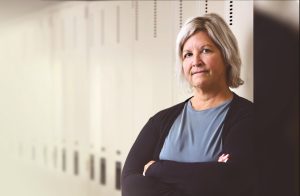Women participate less at conferences, even if gender-balanced
Women are less likely to participate in proceedings at medical and scientific conferences, even with gender-balanced delegates, although simple interventions in conference design sparked a significant improvement in female inclusion, a study has found.
Over the last few decades, women have comprised roughly half of undergraduates in medicine, but remain distinctly underrepresented in medical faculty positions. This imbalance should have been corrected by now, said the study’s lead author, Dr. Victoria Salem, an endocrinologist and senior research clinical fellow at Imperial College London.
Salem and her colleagues analysed questions and comments from multiple sessions conducted at the Society for Endocrinology conference in 2017 and 2018. The conference was attended by approximately 1,000 delegates—of which roughly half were women—each year. For the 2018 conference, the authors carried out interventions intended to improve female inclusion.
Despite the even gender balance of delegates, the researchers found that women asked fewer and shorter questions at the 2017 conference—about one out of five questions or comments came from women. Questions from men lasted a combined total of two hours 54 minutes, versus 56 minutes for women over the course of both conferences.
Source: The Lancet
New library catalogs the human gut microbiome
A new online repository compiles information on the small molecules, or metabolites, produced by nearly 200 microorganisms that commonly inhabit the human gut. The resource, described in Nature in July, could help scientists characterize the outputs of
gut microbiota in autistic people and explore how the intestinal flora might contribute to autism.
Gut microbes produce myriad compounds that may influence various aspects of their host’s physiology, brain and behavior. But scientists have had trouble accurately measuring these compounds and matching them to the microbes that made them.
“This challenge motivated us to construct this gut microbe-focused metabolomics pipeline,” says Shuo Han, a postdoctoral researcher at Stanford University and the paper’s lead researcher.
Han and her colleagues at Stanford and the Chan Zuckerberg Biohub in San Francisco created a specialized analysis technique, which relies on mass spectrometry to identify metabolites by their mass and charge.
Using machine learning, the researchers discovered a previously unknown metabolic process driven by one type of microorganism, called Bacteroidetes.
Source: spectrumnews.org
Scientists tackle indoor air pollution
People on average spend nearly 90% of their time indoors and, especially in the cold winter months in Canada, this statistic can be even higher. With all that time spent indoors, filtering out pollutants from indoor air is very important for the health of Canadians.
Researchers from the College of Engineering at the University of Saskatchewan (USask) have been developing a catalyst for a new type of air purifying technique that would clean air at room temperature.
“Ozone is one of the strongest purifying agents that has been used in the water treatment industry for a long time. In our research, we use ozone and an effective catalyst to purify indoor air from Volatile Organic Compounds or VOCs,” explained PhD student Mehraneh Ghavami.
Ghavami and co-researcher Dr. Jafar Soltan used the HXMA beamline at the Canadian Light Source (CLS) at USask to discover which types of metal catalysts would work best for eliminating pollutants out of the air and recently published their findings. Their air purifying system uses ozone gas and a catalyst to remove indoor air pollutants and turn them into carbon dioxide and water.
The aim of their research is to make a better catalyst and apply it in the real world. Ghavami believes their findings could be implemented in every building that automatically cleans the air, including businesses, schools and homes.
Source: The Canadian Light Source, Univeristy of Saskatchewan
















